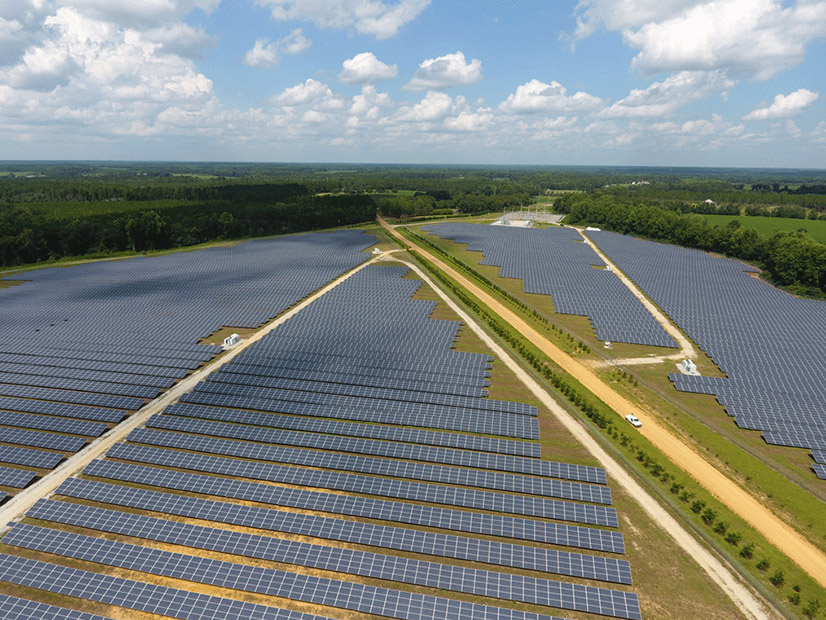The suspension of ISO-NE‘s Order 2023 implementation due to FERC‘s inaction has caused uncertainty and stress for some clean energy developers in New England, who worry a significant delay in the rollout of the new interconnection process could slow the rapid deployment of renewables needed to meet state clean energy goals.
When ISO-NE submitted its compliance package for FERC Order 2023 in May, it received significant support from clean energy associations, who praised the RTO for its “extremely robust stakeholder engagement” and willingness to consider and adopt amendments to its proposal. (See Clean Energy Groups Respond to ISO-NE Order 2023 Filing.)
But the compliance proposal depended in part on quick approval from FERC, requesting an Aug. 12 effective date.
While the New England grid is dominated by natural gas generation, ISO-NE’s interconnection queue almost entirely consists of solar, wind and storage resources, making reforms to the queue to address backlogs a key component of the clean energy transition.
With Order 2023, FERC aims to streamline and add certainty to the interconnection processes, requiring grid operators to evaluate interconnection requests using group studies with pre-determined timelines.
But in the short term, with ISO-NE’s requested effective date long past, the RTO and project developers remain in the dark regarding when FERC will rule on the filing and whether this ruling will require more work. ISO-NE’s effort to comply with the order has been on pause since early September. (See With FERC Inaction, ISO-NE Delays Order 2023 Implementation.)
“We really need FERC to act on this and issue an order to limit the damage,” said Alex Lawton of Advanced Energy United. “The uncertainty is the biggest killer here.”
The ISO-NE queue has been closed since mid-June and is unlikely to open to new interconnection requests until at least fall 2025. According to the RTO’s proposal, only projects that already have submitted a validated interconnection request would be able to take part in the initial “transitional” cluster study.
Despite the cutoff on new interconnection requests, a large group of projects already are eligible to participate in the transitional cluster. According to ISO-NE, 118 projects are eligible for the cluster, totaling more than 40,000 MW in nameplate capacity.
ISO-NE initially planned to begin the transitional cluster study Oct. 11, but it rescinded the study agreements in September due to FERC’s inaction. As proposed, the transitional cluster study process would take nearly a year from when ISO-NE issues cluster study agreements to the final cluster study report.
Delaying the start of the transitional cluster likely also will delay the start of the subsequent cluster study, which would open after the end of the transitional process. Even if FERC rules relatively soon, the commission could require significant changes to the compliance proposal that further delay the start of the transitional cluster study.
Ada Statler, associate attorney at Earthjustice’s clean energy program, said a short delay is not necessarily a huge deal, but “the cascade effect on the queue is really concerning.”
While imminent FERC action is essential, ISO-NE should conduct a “careful examination” of the work they can do to move interconnection along during the delay, Statler said. She also expressed her hope that ISO-NE will communicate with stakeholders as much as possible to minimize negative impacts of the delay.
Along with the direct delay on the start of the cluster studies, the confusion regarding timelines and what additional work FERC may require is a major challenge, said one battery developer. They added that the delay has caused significant uncertainty for a group of projects that have already signed interconnection agreements but were relying on a supplemental process included in ISO-NE’s filing to qualify for capacity reconfiguration auctions.
An extended delay, however, could help some developers who have projects in the late stages of interconnection under the current rules.
“The ISO is continuing to negotiate interconnection agreements for projects with completed system impact studies and, until such time as the Order No. 2023 rules are in effect, will tender a draft interconnection agreement under the current tariff to any project that receives a final system impact study report and chooses to forgo a facilities study,” said ISO-NE spokesperson Mary Cate Colapietro.
That means some projects could avoid needing to enter the transitional cluster, potentially saving them time and money.
“The suspension will be a problem for many stakeholders, but not all; some projects, both at the transmission scale and distribution scale, will be hoping that a delay allows studies in progress to complete and that the final order respects the studies,” said Aidan Foley of Glenvale Solar.
Whether a project can reach an interconnection agreement prior to the start of the transitional cluster study could have a major impact on its development timeline.
In late August, GDQ, the developer of a 203-MW battery project in Rhode Island, wrote in a petition to FERC that requiring the project to enter the transitional cluster “may cause delays in excess of a year and certainly would delay the execution of an interconnection agreement until no sooner than August 2025 (ER24-2926).”
The delay also has created uncertainty for state-jurisdictional resources looking to connect to the distribution grid. ISO-NE has initiated changes to its planning procedures to coordinate affected system operator (ASO) studies with cluster studies, creating set windows for ASO reviews.
“With the suspension of Order 2023 implementation, DG [distributed generation] interconnecting facilities are left without regulatory certainty of whether ASO studies will commence during the suspension period and, if commenced, whether those studies will be required to restart upon the resumption of the transitional cluster study process,” said Kate Tohme, director of interconnection policy at New Leaf Energy.
“This uncertainty leaves DG interconnecting customers across New England at risk of loss of project viability and is a deterrent to continued DG development within the region,” Tohme added.
ISO-NE has said it “will continue ASO study coordination according to current rules and practices until receiving and evaluating an order from the commission on the compliance proposal.”




